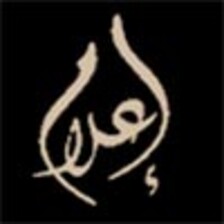I'lam - Media Center for Palestinians in Israel 8 February 2006

Also in this Briefing
A debate at Israel’s most high-profile policy-making forum on government plans to destroy up to 30 villages in the Negev that are home to tens of thousands Bedouin Arabs was cancelled at the last minute as protesters outside threatened to draw attention to the discussion.
The Herzliya Conference, staged annually at the seaside resort north of Tel Aviv, attracts the country’s leading politicians, diplomats, generals, buisinessmen, academics and journalists under the banner “The balance of national strength and security”.
The debate, due to take place on January 23, was to have focused on a document prepared by the National Security Council, which advises the Prime Minister’s Office. The NSC offers advice on how at least 40,000 Bedouin Arabs may be removed by force from their historic lands in the Negev and resettled in townships prepared by the government. The aim is to free up the area for Jewish immigrants so that, in the words of officials, the land can be “Judaised”, or made Jewish.
The NSC paper justifies the expulsion of the Bedouin Arabs on the grounds that Jewish settlers were expelled from their homes in Gaza last summer during the disengagement. “If the state can expel 8,000 citizens who live in legal buildings [in Gaza], it can expel thousands of citizens who live in illegal buildings [in the Negev],” it states, ignoring the fact that the Gaza settlements were established illegally under international law and that the Bedouin Arabs have been living in their villages since before the creation of Israel.
Although Bedouin Arab leaders said the debate was cancelled because the politicians feared it might lose them Arab votes before the election, the NSC claimed the item was removed from the conference agenda because there was not enough time to explain the plan properly.
The NSC document is the latest phase of a process initiated in April 2003, when Prime Minister Ariel Sharon announced a five-year “development plan” for the Negev. In practice, the plan requires the destruction of dozens of “unrecognised villages”, as the government refers to historic Bedouin communities it refuses to supply with water, electricity, roads, schools and health care.
For decades the inhabitants of the villages have been forced to live in tents or tin shacks because anything more permanent would be demolished. Under legislation allied to Sharon’s plan, the land on which the villages stand has been declared state property and the Bedouin inhabitants have been reclassified as “squatters”. They face imprisonment and fines if they refuse to move from their rural communities to one of a dozen Negev townships, all of which are at the bottom of Israel’s socio-economic league tables. The townships are already home to another 80,000 Bedouin Arabs.
The NSC paper says the state’s concerns in developing the region relate to the failure of the Bedouin Arabs to “modernise”, their continuing and “uncontrollable” geographic spread, rising levels of crime and poverty in their communities, their continuing high birth rates, and their growing alienation from the state, which is leading to what the NSC calls “Palestinianisation and Islamisation”.
The Sharon plan for the Negev is one prong in a much wider demographic policy the government has been formulating since the outbreak of the intifada five years ago. At the first Herzliya Conference in December 2000 the Arab population inside Israel was characterised as a “demographic threat” equal to that of the Palestinians in the Occupied Territories.
Reports suggest the government has been considering how to deal with the three Arab heartlands inside Israel: the Galilee, Negev and Little Triangle. According to the Israeli media, the last, a small densely populated area adjacent to the West Bank, may be transferred to the control of the Palestinian Authority in any future deal with the Palestinians.
The Negev too appears to be high on the government’s list of priorities. During the Gaza Disengagement, evacuated settler families were offered extra compensation if they relocated to communities in the Negev or Galilee. The Bush Adminstration has also pledged support for “development” policies in the Galilee and Negev, including some $2.1 billion in aid.
Hana Sweid, director of the Arab Centre for Alternative Planning, says that the government’s vision of “development” is a thinly veiled disguise for “Judaising” the two regions. In the case of the Negev, that will involve extensive land clearances: the demolition of some 30 unrecognised villages and the forced expulsion of their Bedouin Arab inhabitants.
The government will be relying on international Zionist organisations, particularly the Jewish National Fund, to fill the areas from which the Bedouin Arabs are expelled with a new Jewish population. The JNF already holds 13 per cent of Israeli territory for the exclusive use of Jews.
JNF adverts on Israeli websites have been promoting its ” Blueprint Negev”, a development plan described as “A Miracle in the Desert” - an echo of earlier Zionist claims that the desert bloomed only with the arrival of Jews. A link to a message from the JNF’s president, Ronald S. Lauder, says the organisation aims to bring half a million “new residents to the Negev” over the next 10 years. It also plans to build 100,000 homes in 25 new communities. In accordance with the JNF’s charter, these communities will be accessible to Jews only.
Paradoxically, Lauder quotes Israel’s first prime minister, David Ben Gurion, who dreamt of a strong Israel “where communities are born and stay for generations”. The Bedouin Arabs and their communities, it seems, are not part of that dream.
Contact the Arab Centre for Alternative Planning on 04 678 3636, or Hana Sweid on 054 7633 368
Related Links

